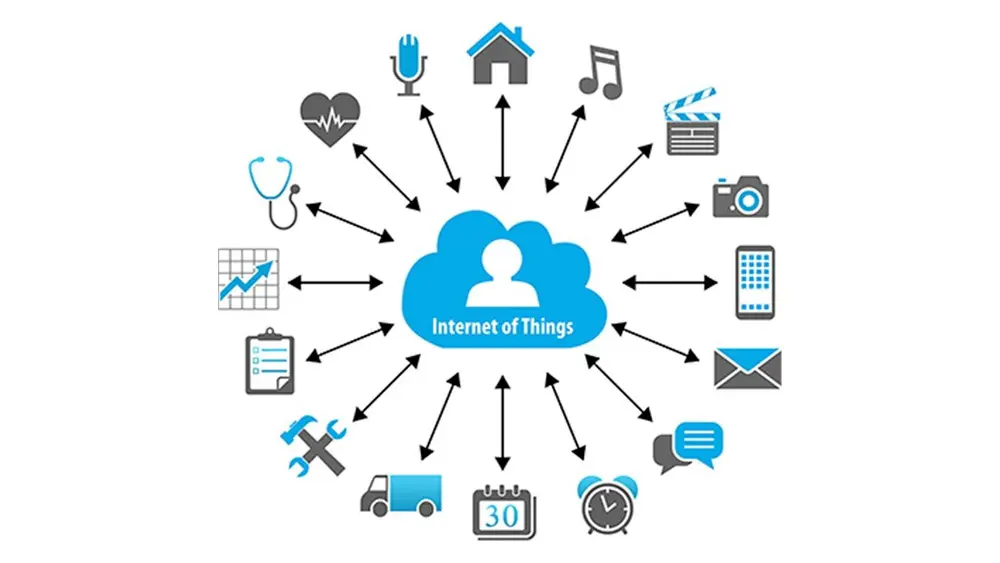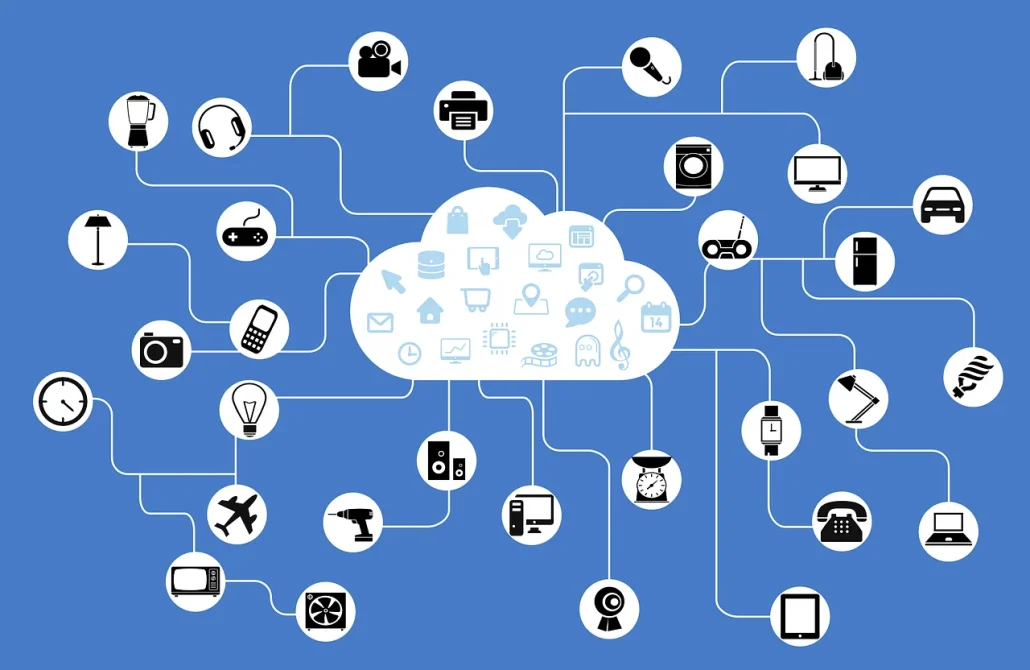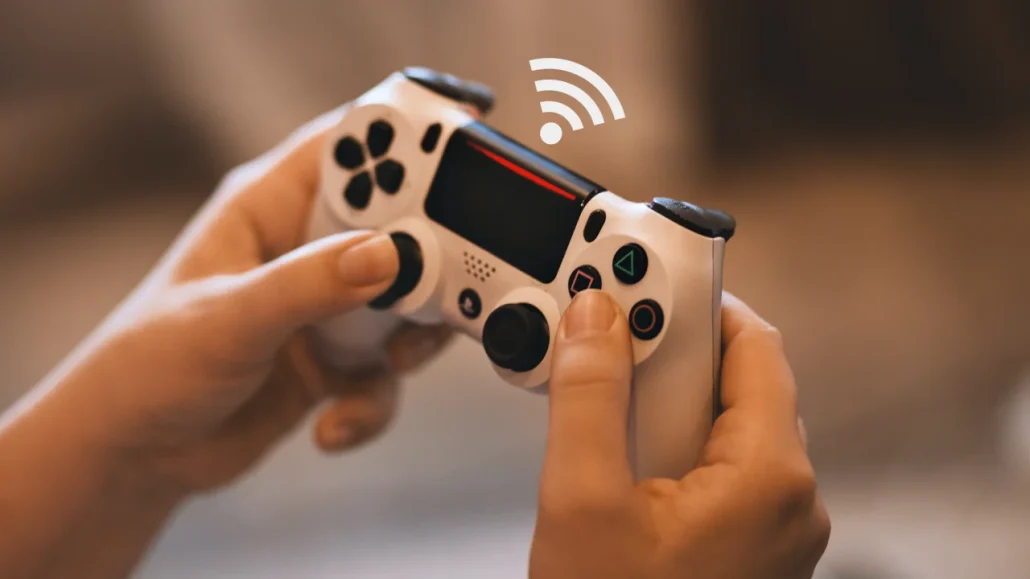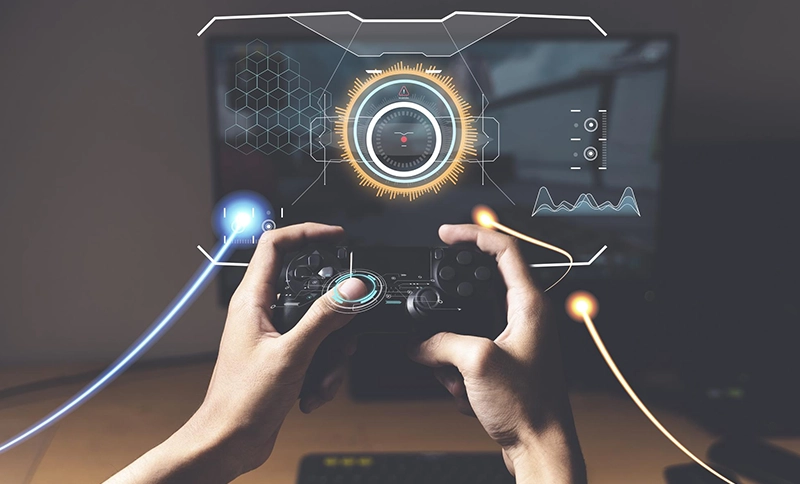The fusion of the Internet of Things (IoT) with the dynamic realm of gaming is redefining interactive experiences. The Internet of Things, a network of interconnected devices capable of exchanging data, has found its stride in the gaming industry. In this exploration, we delve into the intricacies of IoT in gaming, uncovering its benefits, challenges, and transformative impact on the gaming landscape. From enhancing player immersion to revolutionizing gameplay mechanics, IoT’s influence extends across core gaming areas. As we navigate through the technology requirements for IoT game development, this journey concludes with a reflection on the evolving landscape and the promising future that IoT promises within the gaming industry.
What is the Internet of Things (IoT)?


The Internet of Things (IoT) is a revolutionary concept that refers to the interconnected network of everyday physical objects or devices embedded with sensors, software, and other technologies to collect and exchange data over the Internet. These devices, ranging from household items like refrigerators and thermostats to industrial machinery, are equipped with the ability to communicate with each other and with centralized systems. The overarching goal of IoT is to create a seamless and intelligent environment where devices can autonomously interact, share information, and respond to real-world conditions, leading to increased efficiency, automation, and improved user experiences across various domains, including gaming.
IoT in the Gaming Industry
IoT in the game development stages is transforming the way players interact with games and enhancing the overall gaming experience. IoT technologies are integrated into gaming devices, accessories, and environments, creating a more immersive and interactive gameplay environment. Smart devices like controllers, VR headsets, and even gaming chairs can be equipped with sensors and connected to the internet, allowing for real-time data exchange and communication.
This connectivity opens up new possibilities for dynamic gameplay elements, personalized experiences, and multiplayer interactions that go beyond traditional gaming setups. Additionally, IoT in gaming extends to smart homes, where ambient devices can synchronize with in-game events, adapting lighting, temperature, and other environmental factors to match the gaming experience. The integration of IoT in the gaming industry not only enhances gameplay but also paves the way for innovative and futuristic gaming scenarios.
Benefits of IoT in Gaming
Benefits of IoT in gaming include:
- Enhanced Gameplay Experience: IoT in gaming enriches the overall gaming experience by providing real-time data and feedback. Smart devices can adapt to in-game events, creating a more immersive and dynamic atmosphere for players.
- Personalization: IoT allows for personalized gaming experiences based on individual preferences and behaviors. Smart devices can adjust settings, difficulty levels, and other aspects of the game to suit the player’s unique style.
- Interconnected Devices: IoT enables seamless connectivity between gaming devices, creating a holistic gaming ecosystem. Controllers, VR headsets, and other accessories can communicate and synchronize, enhancing the coherence of the gaming setup.
- Innovative Gameplay Features: IoT opens the door to innovative gameplay features, such as augmented reality (AR) integration, smart environments, and adaptive scenarios. These features contribute to the evolution of gaming concepts and storytelling.
- Multiplayer Interaction: IoT facilitates improved multiplayer interactions by providing a platform for real-time communication and collaboration among players. Connected devices enable a more social and interconnected gaming experience.
- Smart Home Integration: The integration of IoT in gaming extends beyond devices to include smart homes. Ambient devices can react to in-game events, adjusting lighting, temperature, and other environmental factors to enhance the gaming ambiance.
- Data Analytics for Developers: IoT-generated data offers valuable insights for game developers. Analyzing player behavior, preferences, and performance metrics allows developers to refine games, implement updates, and tailor future releases.
- Market Expansion: The adoption of IoT in gaming opens up new market opportunities. With the increasing popularity of smart devices, IoT-enabled gaming experiences can attract a broader audience and tap into diverse demographics.
The benefits of IoT in gaming extend beyond traditional gaming boundaries, creating a more dynamic, personalized, and interconnected gaming landscape.
Challenges of IoT in Gaming Industry
Challenges of IoT in gaming include:
- Security Concerns: As IoT devices become integral to gaming, security vulnerabilities pose a significant challenge. The interconnected nature of devices increases the risk of unauthorized access, data breaches, and potential exploitation by malicious actors.
- Compatibility Issues: The gaming industry consists of diverse platforms, devices, and ecosystems. Ensuring seamless compatibility and integration across various IoT-enabled devices can be challenging, leading to interoperability issues.
- Data Privacy: IoT devices collect substantial amounts of user data for personalization and analytics. Ensuring robust data privacy measures and compliance with regulations becomes crucial to maintaining user trust and avoiding legal issues.
- Complex Development Processes: Implementing IoT features in games requires specialized knowledge and resources. Game developers may face challenges in adapting to the complexities of IoT development, leading to increased development time and costs.
- Reliability and Stability: The reliability of IoT devices and networks is crucial for a seamless gaming experience. Unstable connections or device malfunctions can disrupt gameplay and negatively impact user satisfaction.
- User Acceptance and Adoption: Convincing users to adopt IoT-enabled gaming experiences may pose a challenge. Some players might be hesitant due to concerns about privacy, security, or simply adjusting to new technologies.
- Standardization Issues: Lack of standardized protocols and frameworks for IoT in gaming can hinder interoperability. Establishing common standards is essential to creating a cohesive and efficient IoT gaming ecosystem.
- Cost of Implementation: Integrating IoT features into games may involve significant development costs, especially for smaller game developers. Balancing the investment with the perceived value of the gaming experience becomes a critical consideration.
Navigating these challenges is essential for the successful integration of IoT in the gaming industry, ensuring a secure, user-friendly, and innovative gaming environment.


Impact of IoT on Gaming Industry
The impact of the Internet of Things (IoT) on the gaming industry is transformative, ushering in a new era of immersive and interconnected experiences for players. The integration of IoT technologies has far-reaching effects, influencing various facets of the gaming landscape.
- Enhanced Gameplay Experience: IoT enables a more immersive and interactive gaming experience by connecting real-world objects and devices to virtual gameplay. This connection allows for dynamic changes in the game environment based on real-time data, heightening player engagement.
- Personalization and Customization: IoT-driven analytics collect data on player behavior, preferences, and performance. Game developers can leverage this data to personalize gaming experiences, offering tailored content, challenges, and rewards to individual players.
- Smart Gaming Environments: IoT extends the gaming experience beyond screens, incorporating smart devices and environments. Connected lighting, sound systems, and even room temperature can synchronize with in-game events, creating a holistic and sensory-rich gaming atmosphere.
- Real-Time Analytics and Feedback: IoT devices provide real-time data on player interactions, enabling developers to gather insights into gameplay patterns and preferences. This data-driven approach allows for quick adjustments, updates, and improvements to enhance the gaming experience.
- Multi-Device Connectivity: IoT facilitates seamless connectivity between various gaming devices, such as consoles, PCs, smartphones, and wearables. This interoperability allows players to transition between devices without losing progress, fostering a more flexible and accessible gaming environment.
- Emergence of IoT Gaming Accessories: IoT has given rise to a new generation of gaming accessories embedded with smart features. From controllers with biometric sensors to wearables that enhance physical feedback, these accessories contribute to a more realistic and interactive gaming experience.
- Innovative Gameplay Scenarios: IoT-driven technologies enable the creation of innovative gameplay scenarios. For example, location-based IoT can integrate real-world locations into games, transforming physical spaces into virtual battlegrounds or treasure hunts.
- Monetization Opportunities: IoT opens avenues for new monetization strategies in gaming. From in-game purchases linked to real-world products to premium subscriptions offering enhanced IoT features, developers can explore diverse revenue streams.
In summary, the impact of IoT on the gaming industry is profound, reshaping the way games are developed, experienced, and monetized. As IoT technologies continue to evolve, the gaming landscape is poised for further innovation and dynamic player engagement.
Core Gaming Areas Where IoT Can Develop and Expand
The integration of the Internet of Things (IoT) in gaming extends to several core areas, revolutionizing traditional gameplay and expanding possibilities for immersive experiences. Here are key gaming areas where IoT can develop and expand:
- Smart Environments and Augmented Reality (AR): IoT enhances smart environments within games, connecting virtual experiences to real-world surroundings. Augmented Reality games leverage IoT to overlay digital content onto physical spaces, offering players a blended experience that seamlessly integrates the virtual and real.
- Connected Characters and Objects: IoT enables the connection of in-game characters and objects to real-world devices. This connectivity allows for dynamic interactions, where the behavior of characters or the attributes of objects change based on real-time data from connected devices, creating a more responsive and personalized gaming experience.
- Wearable Gaming: Wearable devices, equipped with IoT capabilities, introduce new dimensions to gaming. From fitness trackers that influence in-game character performance to smartwatches providing real-time notifications and updates, wearables contribute to a more integrated and health-conscious gaming experience.
- IoT Gaming Accessories: Specialized gaming accessories embedded with IoT sensors enhance gameplay by providing additional sensory feedback. These accessories, such as controllers with biometric sensors or haptic feedback devices, offer a more immersive and tactile gaming experience.
- Real-Time Data Analytics: IoT-driven data analytics capture real-time information on player behavior, preferences, and performance. This data is utilized to adapt and personalize gaming experiences, offering tailored challenges, rewards, and content based on individual player profiles.
- Location-Based Gaming: IoT plays a pivotal role in location-based gaming, where the physical world becomes an extended game environment. GPS-enabled devices and beacons allow game developers to create experiences tied to specific locations, turning cityscapes into virtual playgrounds.
- Multi-Device Connectivity: IoT facilitates seamless connectivity across multiple gaming devices. Players can transition between consoles, PCs, smartphones, and other devices without losing progress, fostering a flexible and interconnected gaming ecosystem.
- Voice-Activated Commands: Voice-controlled gaming, powered by IoT, enables players to interact with games using natural language commands. This feature enhances user convenience and accessibility, allowing players to control in-game actions through voice recognition technology.
As IoT continues to evolve, these core gaming areas offer a glimpse into the future of interactive and connected gameplay experiences. The development and expansion of IoT in these domains promise a more dynamic, personalized, and technologically advanced gaming landscape.


Technology Requirements for IoT Game Development
IoT game development involves a set of technology requirements to ensure seamless integration of connected devices and deliver engaging, interactive experiences. Here are the essential technology requirements for IoT game development:
- IoT Protocols: Game developers need to implement IoT communication protocols such as MQTT, CoAP, or WebSocket to facilitate efficient data exchange between devices. These protocols ensure low-latency communication and real-time updates, crucial for interactive gaming experiences.
- Cloud Computing: Cloud platforms are integral for storing and processing the vast amounts of data generated by IoT devices in real time. Cloud services enable scalable and reliable infrastructure, allowing developers to manage and analyze data efficiently.
- Security Measures: Given the interconnected nature of IoT devices, security is paramount. Developers must implement robust security measures, including encryption, authentication, and authorization protocols, to protect sensitive player data and prevent unauthorized access.
- Edge Computing: To minimize latency and enhance responsiveness, IoT game development often leverages edge computing. This involves processing data closer to the source (edge devices) rather than relying solely on centralized cloud servers, resulting in faster interactions.
- Device Compatibility: IoT games need to be compatible with a diverse range of devices, from smartphones and tablets to wearables and smart home devices. Ensuring cross-device compatibility requires developers to adopt flexible frameworks and technologies that support various hardware configurations.
- Data Analytics Tools: Real-time data analytics is crucial for understanding player behavior, preferences, and performance. Implementing analytics tools allows developers to gather insights, optimize gameplay experiences, and make data-driven decisions to enhance overall player engagement.
- API Integration: Seamless integration with third-party APIs (Application Programming Interfaces) is essential for incorporating external services, such as location-based services, social media integration, or IoT device management platforms. APIs enhance the functionality and features of IoT-enabled games.
- Machine Learning and AI: Incorporating machine learning algorithms and artificial intelligence enhances the adaptive nature of IoT games. These technologies can analyze player behavior, predict preferences, and dynamically adjust game elements, providing a personalized and evolving gaming experience.
- Firmware and Software Updates: Given the evolving nature of IoT ecosystems, developers should implement mechanisms for remote firmware and software updates. This ensures that IoT devices within the gaming environment can receive improvements, security patches, and new features over time.
- Low-Power Devices: IoT game development often involves devices with varying power capabilities. Developers must optimize game functionality for low-power devices, ensuring efficient resource utilization to extend battery life and improve overall energy efficiency.
By addressing these technology requirements, developers can create innovative and immersive IoT-enabled games that leverage the interconnected capabilities of smart devices to deliver captivating and dynamic gaming experiences.
Final words
In conclusion, the integration of IoT into the gaming industry marks a transformative shift, offering unprecedented opportunities for immersive and interconnected gameplay experiences. The benefits, including real-time interactions, personalized gaming, and expanded gaming areas, showcase the immense potential of IoT in shaping the future of gaming.
However, challenges such as security concerns and device compatibility must be navigated to ensure a seamless and secure gaming environment. As technology continues to advance, the impact of IoT on the gaming industry is set to grow, with developers playing a crucial role in harnessing its capabilities to create innovative and engaging gaming ecosystems. The evolution of IoT in gaming represents a dynamic intersection where technology and entertainment converge, promising exciting developments in the years to come.


